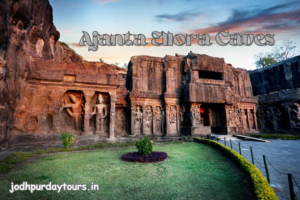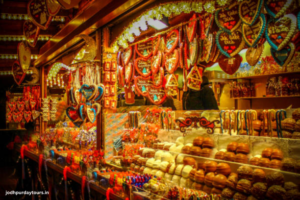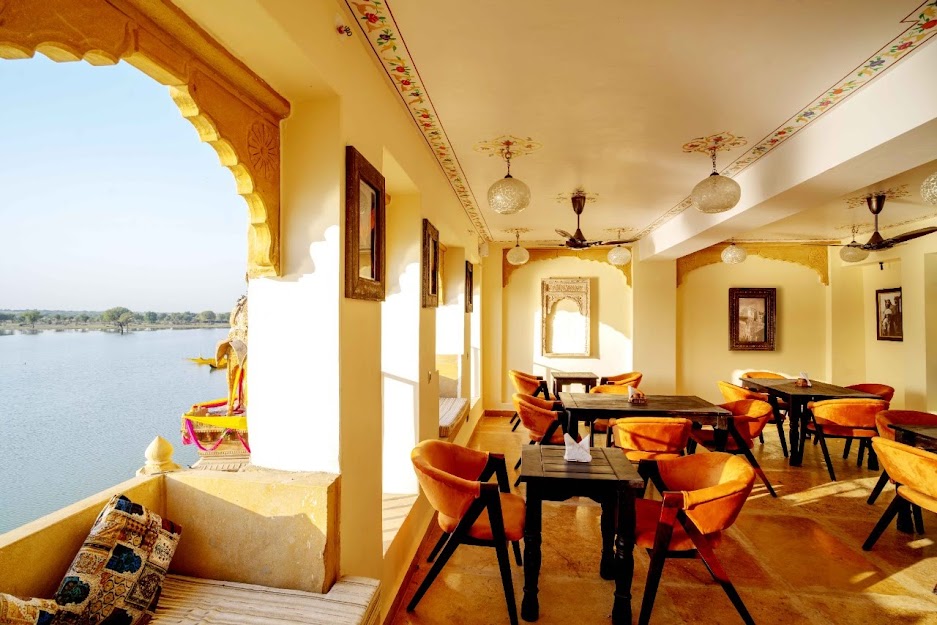
Stay in a Heritage Haveli
Rajasthan offers a plethora of unique travel experiences that blend history, culture, and natural beauty. Here are ten unique experiences you can have in Rajasthan. Historical Significance havelis are historic mansions that have been meticulously restored to retain their original charm while offering modern amenities. These havelis often have rich histories dating back centuries, with ties to royal families or wealthy merchants of Rajasthan.
Architectural Beauty: One of the main attractions of staying in a heritage haveli is the architectural beauty. These buildings showcase exquisite craftsmanship, intricate carvings, colorful frescoes, and traditional Rajasthani design elements. From ornate courtyards to intricately decorated facades, every corner of a heritage haveli reflects the opulence of Rajasthan's heritage.
Royal Hospitality: Many heritage havelis have been converted into boutique hotels or guesthouses, offering guests the opportunity to experience royal hospitality. The staff is often well-trained in traditional Rajasthani hospitality, ensuring a memorable and comfortable stay.
Cultural Immersion: Staying in a heritage haveli allows you to immerse yourself in Rajasthani culture. You can participate in cultural activities such as traditional music and dance performances, Rajasthani cooking classes, or even dress up in royal attire for a photo shoot.
Authentic Cuisine: Most heritage havelis serve authentic Rajasthani cuisine, giving you the chance to savor traditional dishes like dal baati churma, gatte ki sabzi, laal maas, and more. The meals are often served in a royal setting, adding to the overall experience.
Personalized Experiences: Unlike regular hotels, heritage havelis offer personalized experiences tailored to individual guests. Whether it's arranging a private tour of nearby attractions, organizing a camel safari or hot air balloon ride, or hosting a candlelit dinner in the haveli's courtyard, the staff strives to create memorable moments for guests.
Ambiance and Tranquility: Heritage havelis typically offer a serene ambiance, away from the hustle and bustle of modern life. Whether you're lounging in the courtyard, sipping tea on a rooftop terrace overlooking the city, or relaxing in a traditionally decorated room, the tranquility of the haveli enhances the overall experience.
Heritage Conservation: By choosing to stay in a heritage haveli, you contribute to the preservation of Rajasthan's cultural heritage. Many havelis undergo extensive restoration efforts to maintain their architectural integrity, and your patronage supports these conservation initiatives.
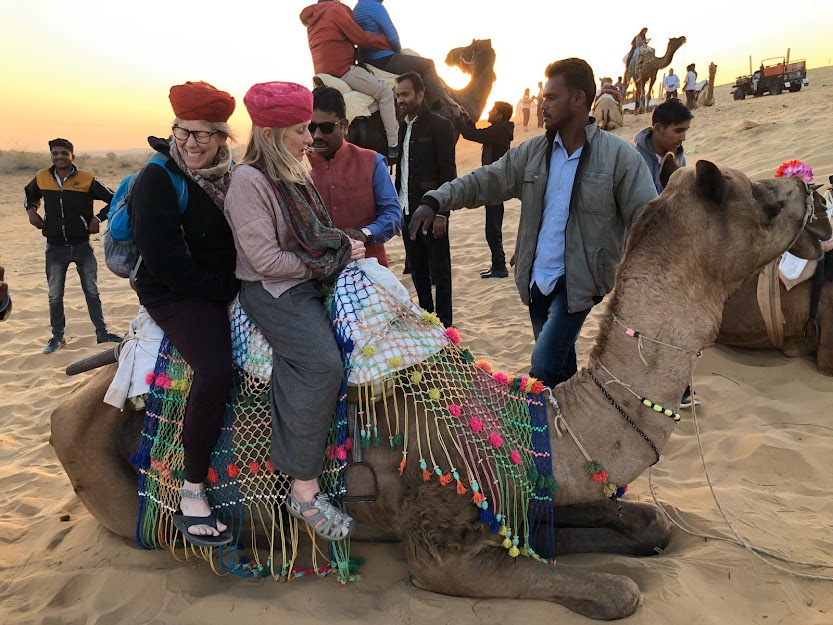
Camel Safari In Thar Desert
Head to Jaisalmer for an unforgettable camel safari in the Thar Desert. Experience the vastness of the desert, Embarking on a camel safari in the Thar Desert is a quintessential Rajasthan experience that allows you to immerse yourself in the vast and mesmerizing landscape of the desert. Here’s a detailed exploration of what a camel safari in the Thar Desert entails: Choosing a Safari: Your camel safari adventure typically begins with choosing a reputable tour operator or guide in cities like Sam Sand Dunes Desert Safari Jaisalmer, Desert Camp Bikaner Rajasthan, or Pushkar Sand Dunes Camp, Osian Sand Dunes Camp Jodhpur, Rajasthan. These operators offer various safari options ranging from half-day excursions to multi-day expeditions, catering to different preferences and time constraints.Camel Selection: Camels, known as the "ships of the desert," are integral to desert travel. Your guide will help you select a well-trained and friendly camel for your journey. Camels are well-suited to desert terrain, with their ability to navigate sand dunes and endure long distances without water.Setting Off: The safari usually starts in the morning or late afternoon to avoid the scorching midday heat. As you set off on your camel, you'll gradually transition from the outskirts of the desert into its heart, where vast expanses of sand dunes stretch as far as the eye can see.Scenic Landscapes: The Thar Desert's landscapes are breathtakingly beautiful, offering a mix of rolling sand dunes, sparse vegetation, and occasional desert wildlife sightings such as antelopes, desert foxes, and various bird species. Your guide will lead you through diverse terrain, including flat desert plains and towering sand dunes.Sunset/Sunrise Views: One of the highlights of a camel safari is witnessing the magical sunrise or sunset over the desert. The shifting colors of the sky, the play of light on the dunes, and the tranquil ambiance create a truly unforgettable experience.Camping Experience: Many camel safaris include overnight camping in the desert. You'll camp amidst the dunes, surrounded by silence and starlit skies. The camp setup often includes traditional Rajasthani tents, a bonfire for warmth and camaraderie, and delicious local cuisine cooked over open flames.Visit Pushkar during the Camel Fair: If your visit coincides with the Pushkar Camel Fair (usually in November), don't miss the chance to witness this colorful spectacle of camel trading, cultural performances, and religious rituals.Cultural Interactions: Along the way, you may encounter small desert villages inhabited by indigenous communities like the. These interactions offer insights into desert life, traditional crafts, and cultural practices that have sustained these communities for generations.Stargazing: The clear desert skies make for excellent stargazing opportunities. Away from city lights, you can marvel at the vastness of the night sky, spotting constellations, shooting stars, and the Milky Way in all its splendor.Local Entertainment: Some camel safaris include entertainment such as folk music and dance performances by local artists. This adds a cultural dimension to your desert experience, showcasing Rajasthan's vibrant heritage.Return Journey: After a night under the stars or a full day of exploration, you'll embark on the return journey to your starting point. The journey back allows you to reflect on your desert adventure and soak in the last moments of tranquility before rejoining civilization.Overall, a camel safari in the Thar Desert is an adventure that combines natural beauty, cultural immersion, and a sense of wilderness exploration, making it a must-do experience for travelers visiting Rajasthan.
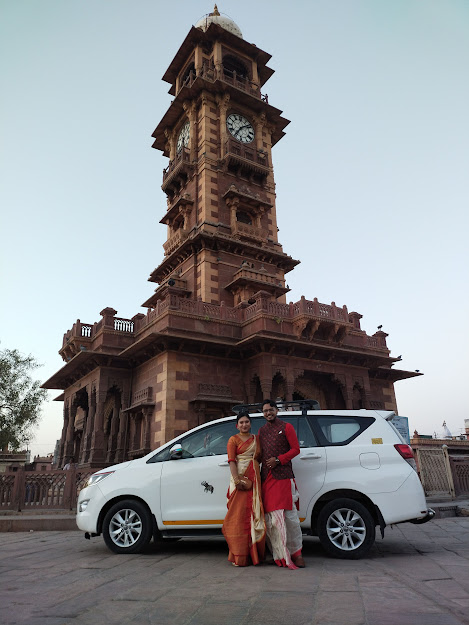
Explore the Blue City of Jodhpur, Rajasthan
"Wander through the narrow, winding alleys of the old town, where each turn reveals a new facet of Jodhpur's rich heritage and vibrant culture. The labyrinthine streets, flanked by centuries-old blue-painted houses, create a picturesque maze that invites exploration and discovery. As you meander through these charming lanes, adorned with colorful textiles, handicrafts, and the aromas of local spices, you'll encounter friendly locals, bustling markets, and hidden gems waiting to be uncovered." The narrow lanes, lined with centuries-old blue-hued houses and adorned with intricate details, offer a glimpse into the city's rich architectural heritage. As you navigate these charming streets, you'll encounter ancient temples, bustling bazaars brimming with vibrant textiles and handicrafts, and local artisans practicing age-old crafts. The echoes of Rajasthani music and the tantalizing aromas of street food add to the sensory tapestry, making every turn a delightful exploration of Jodhpur's cultural tapestry. known as the Blue City due to the blue-painted houses. Visiting the majestic Mehrangarh Fort is a must-do experience in Jodhpur, offering not only a glimpse into the city's history but also breathtaking panoramic views. Historical Insights: As you approach Mehrangarh Fort, you'll be struck by its imposing walls and intricate architecture. The fort, perched on a rocky hilltop, has stood as a symbol of Jodhpur's royal legacy for centuries. Inside, explore its well-preserved palaces, courtyards, and museums that showcase artifacts, weapons, and artwork spanning generations of Rajput rulers. Panoramic Views: One of the highlights of visiting Mehrangarh Fort is the panoramic views it offers. From various vantage points along the fort's walls and terraces, you can gaze out over the "Blue City" of Jodhpur below. The sea of blue-painted houses, interspersed with temples, markets, and lakes, creates a mesmerizing sight against the backdrop of the desert landscape and the Aravalli hills. Museum Exhibits: Take time to explore the museum within Mehrangarh Fort, which houses a vast collection of artifacts, including royal costumes, paintings, arms and armor, musical instruments, and more. The exhibits offer insights into the cultural, artistic, and military history of the region, providing a deeper appreciation for Jodhpur's heritage. Events and Performances: Depending on the time of your visit, you may have the opportunity to attend cultural events or performances held within the fort. These can include traditional Rajasthani music and dance performances, storytelling sessions, or even special events during festivals like the Marwar Festival. Guided Tours: Consider joining a guided tour of Mehrangarh Fort to gain in-depth knowledge about its history, architecture, and significance. Knowledgeable guides can provide fascinating anecdotes, historical context, and lesser-known facts that enhance your overall experience. Visiting Mehrangarh Fort not only offers a glimpse into Rajasthan's royal past but also rewards you with unforgettable vistas and cultural insights that make your journey to Jodhpur truly memorable.
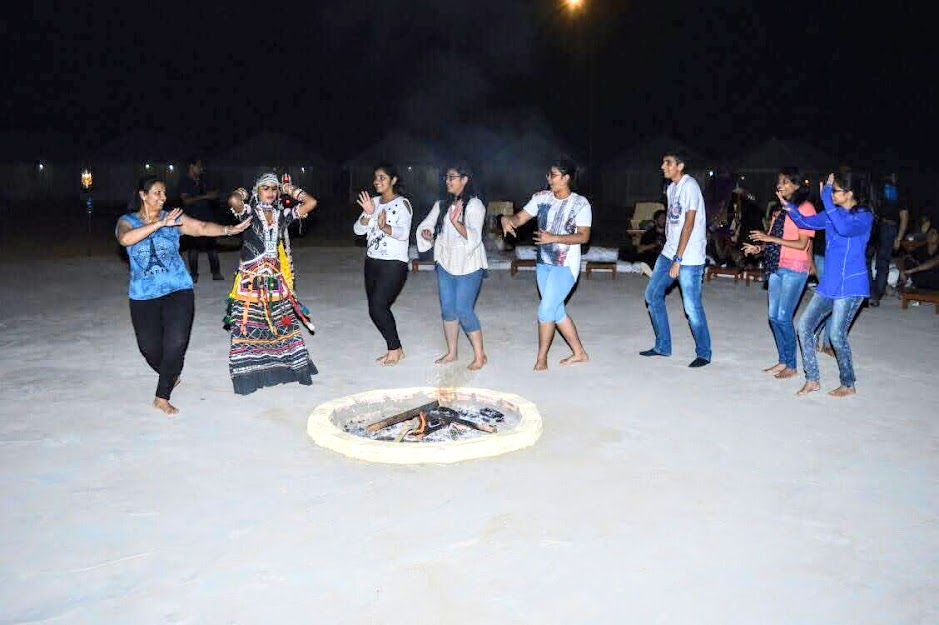
Attend a Rajasthani Folk Music and Dance Performance:-
Attending a Rajasthani folk music and dance performance is an immersive experience that allows you to delve into the vibrant cultural heritage of Rajasthan. Rich Cultural Traditions: Rajasthani folk music and dance have deep roots in the region’s cultural heritage. These art forms have been passed down through generations, showcasing tales of valor, love, and daily life in the desert state. Colorful Costumes: Performers don colorful and elaborate traditional Rajasthani attire, adding to the visual spectacle of the performance. The bright colors, intricate patterns, and embellishments reflect the vibrancy and diversity of Rajasthani culture. Diverse Musical Instruments: Rajasthani folk music is characterized by the use of a variety of musical instruments. You’ll hear the soulful melodies of instruments like the dholak (drum), sarangi (stringed instrument), harmonium, khartal (wooden clappers), and morchang (Jew’s harp), creating a mesmerizing auditory experience. Energetic Dance Forms: Rajasthani folk dances are known for their high energy, rhythmic footwork, and expressive movements. Popular dance forms include the Ghoomar, Kalbelia (Snake Charmer’s Dance), Bhavai, and Chari Dance. Each dance has its own unique style, gestures, and storytelling elements. Cultural Narratives: Through music and dance, performers narrate tales of Rajasthani folklore, historical events, love stories, and the daily lives of desert communities. The performances often depict themes of bravery, romance, devotion, and celebration, giving insight into Rajasthan’s rich storytelling traditions. Interactive Audience Participation: Many Rajasthani folk music and dance performances encourage audience participation. You may be invited to join in simple dance steps or clap along to the rhythmic beats, enhancing the sense of camaraderie and cultural exchange. Live Performances: Whether you attend a performance at a cultural center, a heritage hotel, or during a local festival like the Marwar Festival or Desert Festival, witnessing live Rajasthani folk music and dance adds an authentic touch to your cultural experience. Emotional Connect: The heartfelt performances, soul-stirring music, and infectious enthusiasm of the performers create an emotional connect with the audience. You’ll find yourself drawn into the rhythm and spirit of Rajasthan’s folk traditions, leaving you with lasting memories of the experience.
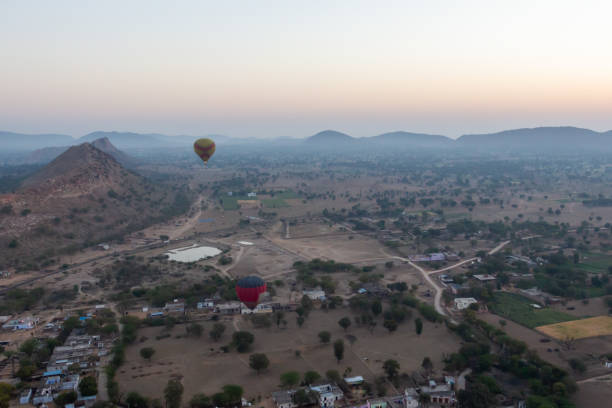
Hot Air Balloon Ride in Jaipur:-
Embarking on a hot air balloon ride in Jaipur is an exhilarating and unforgettable experience that offers a unique perspective of the Pink City and its surroundings. Here’s what you can expect during a hot air balloon ride in Jaipur:
Preparation and Briefing: Your hot air balloon adventure typically begins early in the morning before sunrise. You’ll meet your pilot and crew at the launch site, where they’ll provide a safety briefing and instructions for the flight.
Sunrise Takeoff: As the sun begins to rise, the hot air balloon is inflated and prepared for takeoff. You’ll board the spacious basket and, with a gentle lift, the balloon gracefully ascends into the sky. The cool morning air and the anticipation of the journey ahead add to the excitement.
Panoramic Views: Once airborne, you’ll be treated to breathtaking panoramic views of Jaipur and its iconic landmarks. From the majestic Amber Fort and Jaigarh Fort to the City Palace, Hawa Mahal (Palace of Winds), and the bustling streets below, the aerial perspective offers a unique appreciation of Jaipur’s architectural beauty and historical heritage Amber Fort.
Serenity and Tranquility: Floating silently in the sky, you’ll experience a sense of serenity and tranquility unlike any other. The peacefulness of the early morning hours, combined with the gentle swaying of the balloon, creates a magical atmosphere that’s perfect for relaxation and reflection.
Wildlife Spotting: Keep an eye out for wildlife during your hot air balloon ride. Depending on the flight path, you may spot birds, deer, and other animals amidst the natural beauty of Rajasthan’s landscapes. Professional Guidance: Throughout the flight, experienced pilots provide commentary and point out notable landmarks, offering insights into Jaipur’s history, culture, and geography. Their expertise ensures a safe and enjoyable journey.
Memorable Photos and Videos Captcher in camera Experience: After landing, the hot air balloon adventure concludes with transportation back to the launch site. Reflect on your flight,
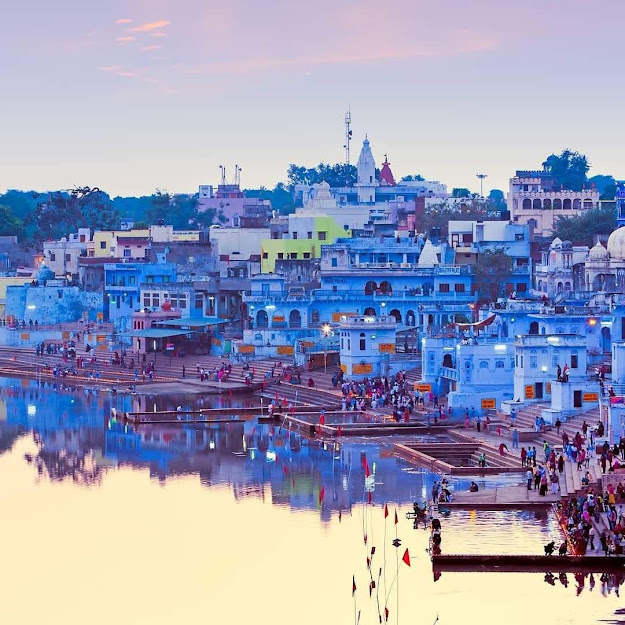
Historical and Religious Background: The Brahma Temple in Pushkar is one of the very few temples dedicated to Lord Brahma, the creator deity in Hinduism. Its historical and religious importance makes it a focal point of pilgrimage and reverence for Hindus.
Architectural Beauty: The temple’s architecture is noteworthy, featuring a red spire (shikhara) and a marble sanctum sanctorum. The entrance to the temple is marked by a beautifully decorated gate (torana) adorned with intricate carvings and paintings depicting mythological motifs.
Pujas and Rituals: Witnessing the various pujas (religious ceremonies) and rituals performed at the Brahma Temple can be a fascinating experience. The rhythmic chanting of mantras, ringing of bells, and offering of prayers create an atmosphere of devotion and spirituality.
Surrounding Markets: After visiting the temple, explore the vibrant markets and streets surrounding Pushkar’s Brahma Temple. You’ll find shops selling religious items, souvenirs, clothing, jewelry, and traditional Rajasthani handicrafts, providing an opportunity for shopping and cultural immersion.
Photography Opportunities: The Brahma Temple’s architecture, colorful surroundings, and the picturesque backdrop of Pushkar make it a photographer’s delight. Capture the intricate details of the temple, the bustling activities outside, and the scenic beauty of Pushkar town.
Festivals and Celebrations: If your visit coincides with festivals like Kartik Purnima or the Pushkar Camel Fair, you’ll experience heightened spiritual fervor and cultural festivities around the Brahma Temple. These occasions often include processions, cultural performances, and special rituals.

Exploring the Shekhawati region of Rajasthan is like stepping into an open-air art gallery, where every wall, every corner, and every haveli (mansion) tells a story through its
Frescoed Havelis: Shekhawati is renowned for its beautifully decorated havelis adorned with frescoes that depict scenes from mythology, history, daily life, and Rajasthani culture.
Mandawa: Mandawa, one of the key towns in Shekhawati known for its ornate havelis. Wander through the narrow lanes lined with elaborately painted mansions such as the Goenka Haveli, Murmuria Haveli, and Jhunjhunwala Haveli, marveling at the intricate details and vibrant colors.
Fatehpur: Temple Visits: Explore ancient temples like the Khatu Shyamji Temple, Rani Sati Temple in Jhunjhunu, and the Mukundgarh Fort Temple complex. These temples not only showcase religious architecture but also often feature artistic elements like murals and carvings.
Cultural Events: Shekhawati Festival or Teej, immerse yourself in traditional music, dance performances, camel rides, and local festivities that celebrate the region’s heritage.
Exploring the Shekhawati region is a journey through time and artistry, offering a glimpse into Rajasthan’s rich cultural tapestry and architectural splendor preserved in its magnificent havelis and painted structures. must-visit havelis here, showcasing a blend of Rajput, Mughal, and European architectural influences.
Nawalgarh: Explore Nawalgarh, often referred to as the “Open Art Gallery of Rajasthan.” The town is home to stunning havelis like the Poddar Haveli, Anandilal Poddar Haveli, and Morarka Haveli, where you can admire the intricate frescoes depicting mythological tales, royal processions, and social scenes.
Shekhawati Painted Stepwells: Discover the painted stepwells (baoris) of Shekhawati, such as the Rani Sati Temple and the Poddar Chhatri in Nawalgarh. These stepwells are not only functional water sources but also showcase elaborate artwork on their walls, pillars, and arches.
Workshops: Engage in art and craft workshops conducted by local artisans to learn about traditional painting techniques, pottery, and other crafts prevalent in the Shekhawati region. It’s a hands-on way to appreciate the artistic traditions passed down through generations.
Local Cuisine: Indulge in authentic Rajasthani cuisine at local eateries and heritage hotels in Shekhawati. Savory dishes like dal baati churma, ker sangri, gatte ki sabzi, and sweets like imarti and ghewar are culinary delights not to be missed.
Exploring the Shekhawati region is a journey through time and artistry, offering a glimpse into Rajasthan’s rich cultural tapestry and architectural splendor preserved in its magnificent havelis and painted structures.

Introduction to Ranthambore: Ranthambore National Park, located in Rajasthan, is one of India’s largest and most renowned national parks, known particularly for its population of Bengal tigers. The park is also home to a variety of other wildlife species, including leopards, sloth bears, sambar deer, Indian gazelles, and numerous bird species.
Safari Zones: Ranthambore is divided into several safari zones, each offering a unique terrain and wildlife sightings. Zones like Zone 1 (core area) and Zone 3 are known for tiger sightings, while other zones provide opportunities to observe different animal behaviors and ecosystems.
Types of Safaris: Ranthambore offers different types of safaris, including jeep safaris and canter safaris. Jeep safaris are more intimate, allowing smaller groups of visitors to explore deeper into the park and have better chances of wildlife sightings. Canter safaris accommodate larger groups and follow designated routes within the park.
Other Wildlife: In addition to tigers, Ranthambore is home to a rich array of wildlife. Keep an eye out for leopards lounging on tree branches, sloth bears foraging for food, spotted deer grazing in meadows, and a variety of bird species such as peacocks, eagles, owls, and kingfishers.
Birdwatching: Ranthambore is a paradise for birdwatchers, with over 300 bird species recorded in the park. Birdwatching enthusiasts can spot migratory birds, waterfowl, raptors, and colorful avian species during safaris, especially around water sources like Rajbagh Talao and Padam Talao.
Photography Opportunities: Wildlife enthusiasts and photographers will find ample opportunities for capturing stunning photographs of Ranthambore’s wildlife, landscapes, and natural beauty. Patience, timing, and a keen eye for detail can result in memorable wildlife photography during safaris.
Overall, a wildlife safari in Ranthambore National Park offers a thrilling and immersive experience in nature, allowing you to witness the beauty and diversity of Rajasthan’s wildlife and ecosystems.
- Delhi To Ranthambore National Park Safari Distance:- 320 KM/5Hrs
- Jaipur To Ranthambore National Park Safari Distance:- 170 KM/3Hrs
- Agra To Ranthambore National Park Safari Distance:- 300 KM/5Hrs
- Ajmer To Ranthambore National Park Safari Distance:- 260 KM/5Hrs
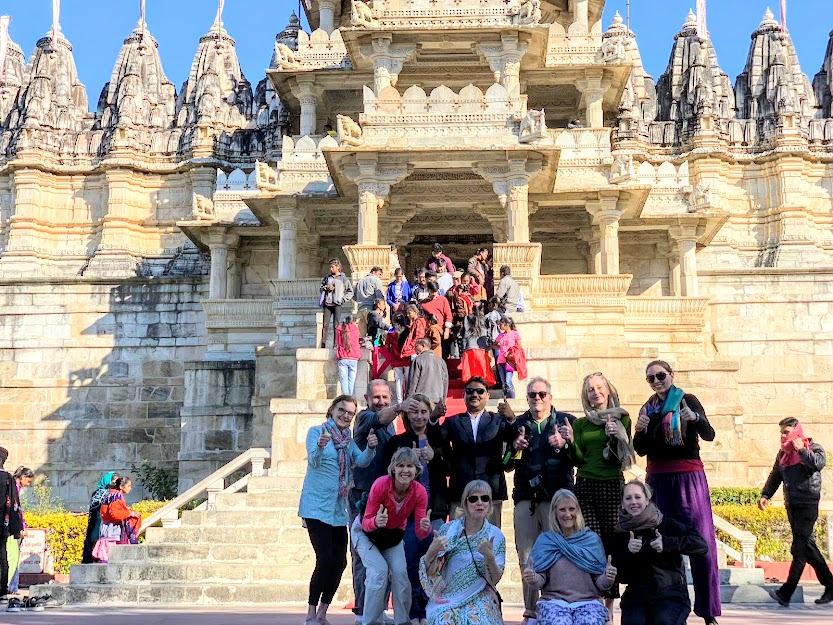
Historical and Religious Significance: The Jain Temples in Ranakpur are renowned for their historical importance and religious significance. These temples are dedicated to Lord Adinath, the first Tirthankara of Jainism, and are considered among the most important Jain pilgrimage sites in India.
Architectural Splendor: The highlight of the Ranakpur Jain Temples is their architectural magnificence. The main temple, Chaumukha Temple (Four-Faced Temple), is a masterpiece of marble architecture with 1,444 intricately carved marble pillars, each unique in design and detailing. The pillars are adorned with exquisite sculptures, geometric patterns, and depictions of Jain mythology.
Chaumukha Temple: In addition to the Chaumukha Temple, Ranakpur houses several other Jain temples within the complex, each showcasing distinctive architectural features and artistic brilliance. These temples include the Parsvanath Temple, Amba Mata Temple, Surya Temple, and more.
Atmosphere: As you explore the Jain Temples, you’ll experience a serene and spiritually uplifting atmosphere. The peaceful surroundings, melodious chants, and the scent of incense create a tranquil ambiance conducive to contemplation and introspection.Jain Philosophy and Symbolism: The Jain Temples of Ranakpur also serve as repositories of Jain philosophy, teachings, and symbolism. The architectural elements, sculptures, and iconography within the temples convey Jain principles of non-violence, compassion, karma, and the path to enlightenment.
Guided Tours: Guided tours are available at the Jain Temples, allowing visitors to gain deeper insights into the history, architecture, and religious significance of the site. Knowledgeable guides share stories, legends, and anecdotes associated with the temples, enhancing the overall experience.
Photography Opportunities: The Jain Temples of Ranakpur offer abundant photography opportunities for capturing the intricate details, majestic pillars, serene interiors, and the overall grandeur of the temples. Remember to respect the sanctity of the site while taking photographs.
Each of these experiences offers a unique perspective on Rajasthan’s diverse heritage, landscapes, and traditions.

